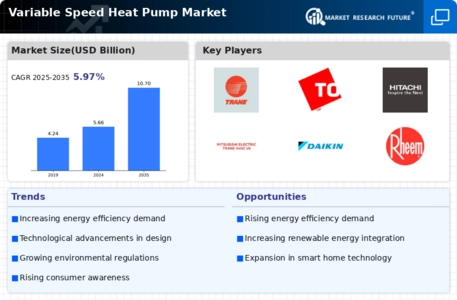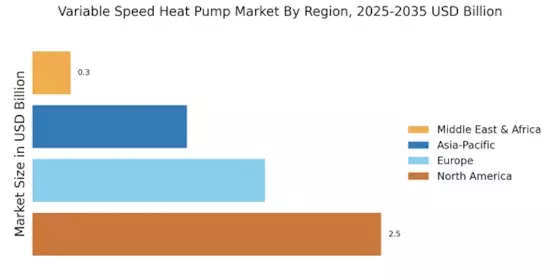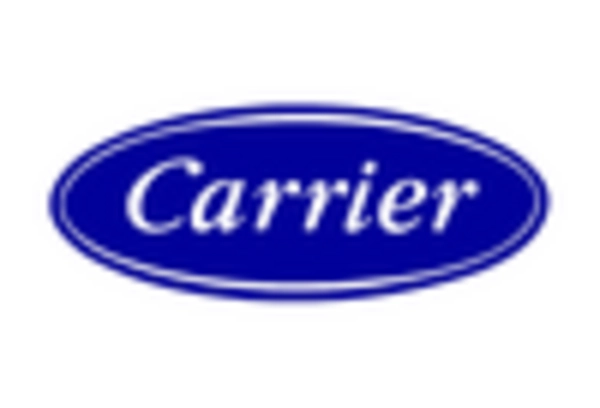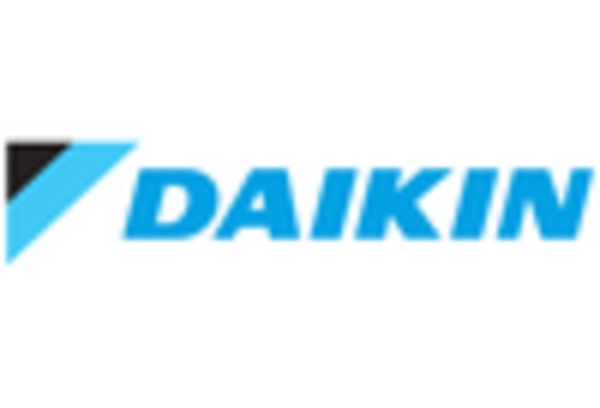Rising Energy Costs
The Variable Speed Heat Pump Market is also being driven by the rising costs of energy. As energy prices continue to escalate, consumers are increasingly seeking cost-effective solutions to manage their energy expenses. Variable speed heat pumps, known for their energy efficiency, present a viable alternative to traditional heating and cooling systems. By utilizing variable speed technology, these systems can operate at lower speeds during milder weather, thereby consuming less energy and reducing utility bills. This economic incentive is likely to encourage more homeowners and businesses to invest in variable speed heat pumps, thereby expanding the market.
Consumer Awareness and Education
Consumer awareness and education are pivotal in driving the Variable Speed Heat Pump Market. As individuals become more informed about the benefits of energy-efficient heating and cooling solutions, the demand for variable speed heat pumps is likely to increase. Educational campaigns and resources provided by manufacturers and industry organizations help demystify the technology and highlight its advantages, such as lower energy consumption and improved comfort. This growing awareness is essential for fostering a more informed consumer base, which in turn can lead to higher adoption rates of variable speed heat pumps, thereby enhancing the overall market landscape.
Increasing Focus on Sustainability
The Variable Speed Heat Pump Market is experiencing a notable shift towards sustainability, driven by heightened awareness of environmental issues. Consumers and businesses alike are increasingly prioritizing energy-efficient solutions that reduce carbon footprints. This trend is reflected in the growing adoption of variable speed heat pumps, which offer superior energy efficiency compared to traditional systems. According to recent data, the energy consumption of variable speed heat pumps can be up to 30% lower than that of conventional units. As sustainability becomes a core value for many organizations, the demand for eco-friendly heating and cooling solutions is expected to rise, further propelling the Variable Speed Heat Pump Market.
Government Regulations and Incentives
Government regulations and incentives play a crucial role in shaping the Variable Speed Heat Pump Market. Many governments are implementing stricter energy efficiency standards and offering financial incentives to promote the adoption of energy-efficient technologies. These initiatives not only encourage consumers to transition to variable speed heat pumps but also support manufacturers in developing innovative products. For instance, tax credits and rebates for energy-efficient home improvements can significantly lower the upfront costs associated with purchasing and installing variable speed heat pumps. As regulatory frameworks continue to evolve, they are expected to further stimulate growth in the Variable Speed Heat Pump Market.
Technological Advancements in HVAC Systems
Technological innovations are significantly influencing the Variable Speed Heat Pump Market. The integration of advanced technologies, such as IoT and machine learning, enhances the performance and efficiency of variable speed heat pumps. These systems can adapt their operation based on real-time data, optimizing energy use and improving comfort levels. Furthermore, the introduction of smart thermostats and remote monitoring capabilities allows users to manage their heating and cooling systems more effectively. As these technologies continue to evolve, they are likely to attract more consumers to the Variable Speed Heat Pump Market, fostering growth and innovation.


















Leave a Comment